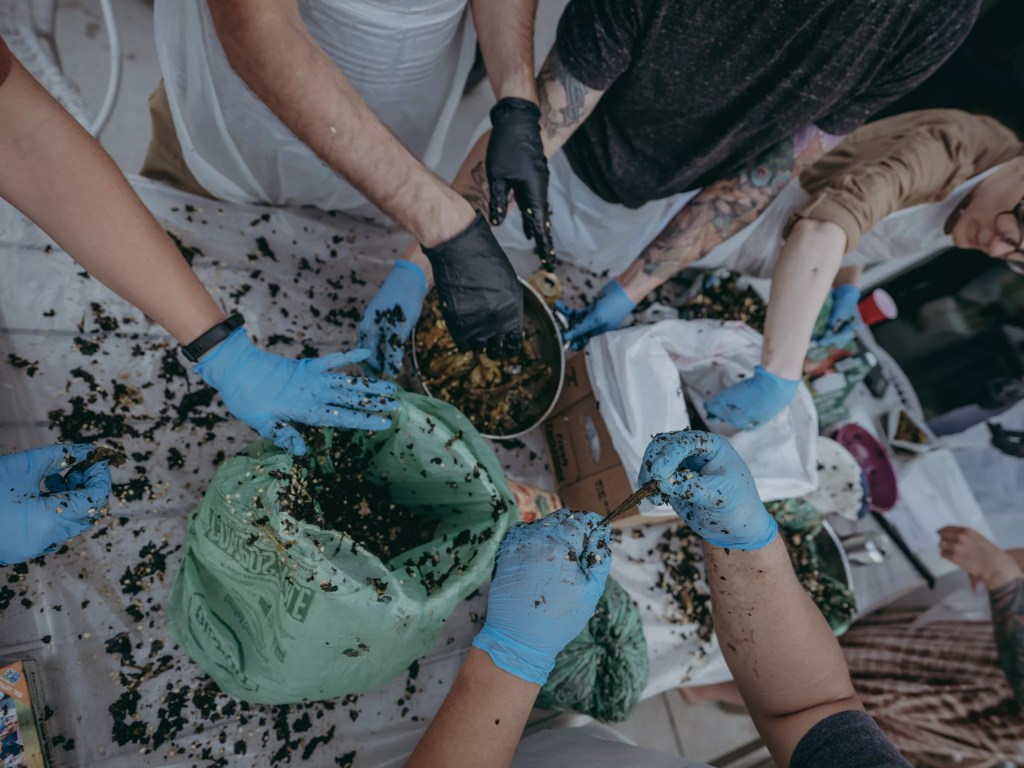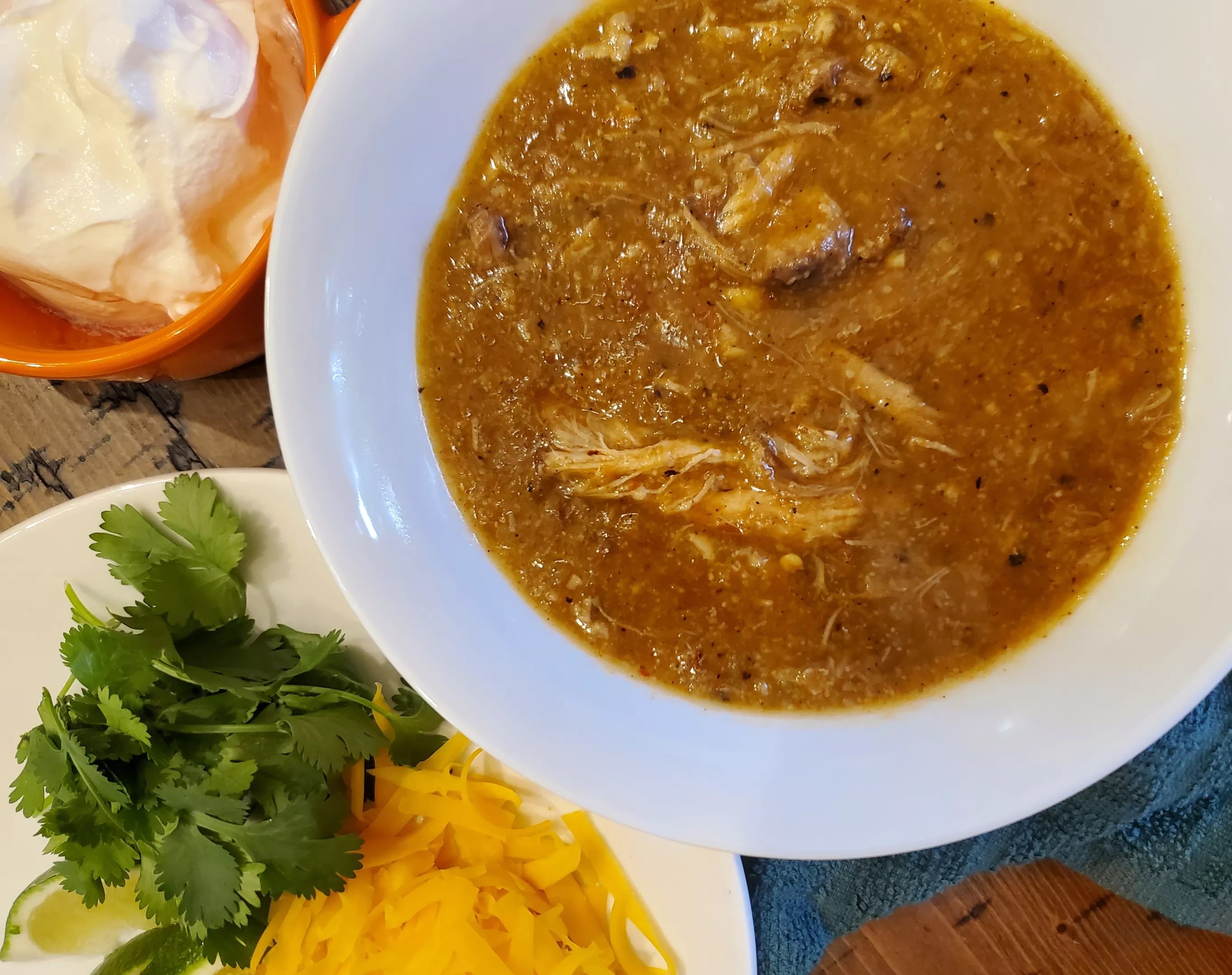
Molly Martin

Audio By Carbonatix
Where’s the best green chile in town? Every year, we answer that question with our top picks, ranging from the tomato-heavy green chile at Brewery Bar II to El Taco de Mexico’s brownish-green version. And every year, there are people who counter with this: “My house.”
And frankly, that would be my unofficial answer, too. While I love getting a fix at my favorite Mexican restaurants, I’ve also spent years perfecting my own recipe for green chile.
While green chile stands are now closed for the season, chile-making is best when the temps drop, which means it’s go time for pulling out your frozen stash. (You can also score frozen green chiles at many grocery stores, or sub fresh chiles that can be roasted in your oven at home.)
Denver, make your New Year’s Resolution Count!
We’re $12,000 away from reaching our $50,000 year-end fundraising goal. Your support could be what pushes us over the top. If our work has kept you informed and connected this year, please consider making a contribution today.
When I arrived in Denver in 2005, I’d never heard of green chile. I spent my childhood living in Vermont, where there was virtually no trace of Mexican food. When I was in middle school, my family moved to north central Florida, where I became well-versed in chain-restaurant fajitas, but that was about it.
It didn’t take long, though, for me to learn about one of Colorado’s most iconic dishes. Shortly after moving here, I began dating a guy who was born and raised in Denver, and he had a passion for green chile – which seemed to be on the menu everywhere we’d go to eat. There was a strip-mall Italian joint in Englewood that, inexplicably, also served Mexican hamburgers – another culinary conundrum for me.
“Do you want to try it?” he’d ask. But I was as stubborn as I was picky back then, and the tortilla-wrapped burger covered in a gloppy-looking, orange/brown-hued sauce studded with bits of green stuff and little pieces of fatty pork had zero appeal.
And so it went for a few months. He’d order a smothered burrito, and I’d scoff. He’d dig into a smothered chile relleno, and I’d stick with fajitas. We frequently went to Sam’s No. 3 in Aurora, one of his family’s longtime go-to’s, where he’d order green chile in a bowl. “Try a bite,” he’d urge, but I remained wary. I took nibbles here and there, but I just didn’t get it.
Then one day he opted instead for the Tex Mex Chili at Sam’s, a mix of green chile and its beefy red chili – something I had a nostalgic fondness for, thanks to the annual chili cook-off that was held at the ski mountain near our home in Vermont. “Can I try a bite?” I asked. Several bites later, I had to promise to just order my own the next time. That Tex Mex Chili became one of my favorite things to eat, but the appeal of straight green chile remained a mystery.
I finally started to come around when his mom made a batch and had everyone over for a meal. Not wanting to be rude, I ladled some green chile into a bowl and dug in. This one packed a whole lot more heat than others I’d tried, and there were larger pieces of tender pork.
By then, I’d gotten into learning how to cook at home – mostly because I was a totally broke young mom who couldn’t afford to eat out and wanted to feed my daughter healthy meals. So I decided I’d try making green chile myself, and my first attempt was pretty terrible.
One big mistake was the chiles themselves, which I’d purchased from the frozen food section at Walmart. I wasn’t a confident cook at that point, so I followed the recipe on the bag, subbing chicken for pork (who knows why), and the result was a totally bland mess. But over time, I learned a lot about making green chile.

Will Dozier
I started going to Nick’s Garden Center in Aurora (which makes a mean green chile of its own at its seasonal cafe) every fall to pick up bags of freshly roasted peppers, making sure to clean off all the seeds and skin before freezing them in recipe-sized batches. I realized that for my ideal heat level, I like a mix of medium and hot. I experimented with adding tomatoes, and sometimes tomatillos. After having the green chile plate at La Fogata, which used to come with one large piece of tender, slow-cooked meat, I started using a whole pork roast instead of smaller chunks.
Sometimes I used a roux to thicken the chile. Other times I’d just cook it low and slow for hours, letting it thicken naturally (which chef Carrie Baird of Fox and the Hen says is her thickening technique). A few years ago, a friend shared his latest green chile recipe tip: tossing in a bit of cornmeal, which not only thickens the dish, but also adds a faint corn flavor.
A couple of years ago, shortly after making a big pot of the good stuff, I was sitting at the bar at Sam’s No. 3 and started chatting with the woman next to me. We were both sipping big mimosas and had a solid daytime buzz, so the conversation flowed freely from bad first dates to favorite vacation spots to green chile. “I’ve never made it at home,” she told me.
“It’s super easy, you should totally try it! I’ll write down my recipe for you,” I told her. We exchanged phone numbers, and less than an hour after leaving, I texted her the link to a Google Doc with a very loose rundown of my technique.
I’ve since shared that link with around a dozen people, including a reader who recently messaged me on Instagram and a fellow food writer, both of whom said the results were delicious. So now I’m sharing it here.
There are no measurements for the seasonings – just follow your heart. That goes for the amount of garlic, too, and the chiles themselves. Hate tomatillos? Leave them out. Not into tomatoesm or cumin, or cornmeal for thickening? Skip them. This is just a jumping-off point for creating your own ideal recipe.
If you have green chile tips, send them to cafe@westword.com – like everything I cook, this recipe is sure to continue evolving. Someone recently suggested frying the pork in lard instead of vegetable oil, which is a very tasty switch up.
Happy cooking!

There are several ways to thicken green chile, but a bit of cornmeal has become my go-to.
Molly Martin
Colorado-Style Pork Green Chile
Ingredients
3-4 pound pork shoulder roast (or cubed pork)
Vegetable oil
Salt
Cumin
Chile powder
Cayenne (optional)
1 large onion, diced
6-10 cloves of garlic, minced
6-8 tomatillos, diced
1 14.5-ounce can diced fire roasted tomatoes
2-3 cups of roasted green chiles, diced
2 32-ounce boxes of chicken stock (or homemade chicken stock)
2-3 tablespoons cornmeal
I usually use a pork shoulder roast, but you can also use cubed pork if you’re short on time. Season pork with a mix of salt, cumin and chile powder. If I have mild chiles and want more heat, I’ll add cayenne, too.
Add a few tablespoons of vegetable oil to a deep pan and sear pork over medium heat until browned on all sides. Remove from pan.
Add more oil if needed and saute onion and garlic for a few minutes.
Add tomatillos, canned tomatoes and green chiles. Toss everything together and season with more salt. I usually add more cumin, as well.
Add pork back to the pot along with enough chicken stock to cover the meat. Bring to a boil and turn heat to low.
Taste and adjust seasoning after an hour or so if you’re using a whole roast (and after thirty minutes for cubed pork). Add a couple tablespoons of cornmeal to thicken. You can add more as the chile cooks down to get to your desired consistency.
Simmer until you can shred the pork roast (two to three hours total). If using cubed pork, cook until it’s tender, usually about an hour.
Sometimes I remove the cooked pork and shred it in a separate bowl. Before adding the meat back in, I use an immersion blender to lightly blend the chile – not completely, since you still want some chunks of chiles, onions, etc. This gives the final dish a nice, saucy consistency.
I like to eat it as a stew, garnished with limes, cilantro, sour cream and cheddar cheese, and served with flour tortillas.